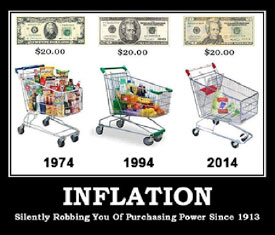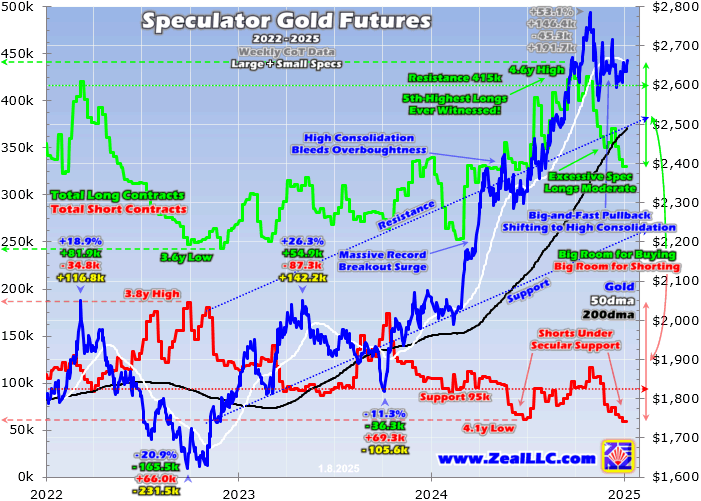In a recent episode of the Money Metals podcast, host Mike Maharrey interviewed Greg Weldon, founder and CEO of Weldon Financial, to discuss the latest trends in inflation, central bank policy, consumer debt, and the global shift led by BRICS nations.
Weldon, a 40-year market veteran, offered insights into how these developments are shaping the economic landscape in 2024 and beyond.
(Interview Begins Around 7:13 Mark)
Who is Greg Weldon?
Greg Weldon
Gregory T. Weldon is a financial investor and a 40-year veteran of the global financial markets, with a career that began in 1984 on the trading floor of the COMEX in the World Trade Center. Over the decades, Greg Weldon has worn many hats, from a floor trader in the gold and silver pits to an institutional futures broker, hedge fund manager, and independent global macro-market researcher. Weldon is the founder and CEO of Weldon Financial, a firm renowned for its macroeconomic analysis and research publications.
Greg Weldon’s experience spans a wide range of financial services, including his time as a portfolio manager at Moore Capital and Commodity Corporation in the 1990s. Since founding Weldon Financial in 1997, he has published numerous reports, including Weldon’s Money Monitor, The Metal Monitor, and The ETF Playbook, offering insights into commodities, currencies, bonds, and stock markets for institutional investors and individuals alike. Weldon is also the author of Gold Trading Boot Camp (2006), a book that predicted the global credit crisis and the role of gold during central bank debt monetization.
Now, with decades of market experience and an ability to forecast economic trends, Weldon is regarded as one of the top macro-research professionals in the industry. He continues to provide market strategies through his Global Macro Strategy Report and remains a highly sought-after speaker and commentator on financial news outlets.
Inflation Trends and CPI Data

The discussion began with a breakdown of the August Consumer Price Index (CPI) report. Weldon noted that the headline inflation rate was 2.5%, while core inflation reached 3.2%, slightly higher than expected. The core inflation rose 0.3% month-on-month compared to the forecast of 0.2%.
Weldon highlighted that energy prices continued to decline, with crude oil inventories at a five-year low. This decline in energy prices was unexpected, especially considering ongoing geopolitical tensions in the Middle East. On the other hand, the inflationary pressure on services remained significant, with shelter inflation still exceeding 5%.
A drop in vehicle prices, driven by a 21% increase in unsold vehicle inventories, contributed to lowering inflation. However, Weldon warned that the cost of insuring and maintaining those vehicles saw double-digit inflation, compounding the financial strain on consumers.
Food Prices and Commodities
Weldon also discussed food inflation, which had shown signs of easing. He tracks 114 food items, and at one point, 78% of those items had experienced inflation above 5% year-over-year. Prices for commodities like grains and oil seeds have fallen sharply but have since stabilized. Despite large harvests, demand for these commodities remains strong, which could limit future price drops.
Debt Crisis and Central Bank Policies
Weldon emphasized that central banks’ primary challenge is balancing inflation control with debt management. He pointed out that U.S. government spending is at unprecedented levels, exceeding $500 billion per month, and the annual deficit is set to surpass $2 trillion. These are levels typically seen during major economic downturns, yet they are being sustained simply to maintain the status quo.
Weldon warned of the growing debt burden, explaining that printing 10% on $1 trillion today is far more significant than printing 10% on $100 billion in 1987. As the U.S. economy faces this growing debt, Weldon believes central banks will be forced to tolerate higher inflation to avoid deflation.
He likened this situation to the “ratchet effect,” a concept popularized by economist Robert Higgs, where government interventions tend to increase over time, pushing limits further with each crisis. Weldon noted that interest rates now face a downward ratchet effect, where they decrease faster but rise slower after each economic downturn.
Global Geopolitical Shifts: The Rise of BRICS
One of the most significant shifts Weldon discussed was the evolving power of the BRICS nations (Brazil, Russia, India, China, South Africa). He described a potential global economic realignment, with BRICS countries increasingly challenging Western dominance.
Weldon cited recent reports that Turkey, a NATO and EU member, has expressed interest in joining the BRICS bloc. This geopolitical development underscores the growing influence of BRICS as a counterbalance to the West. According to Weldon, the BRICS currency unit, which may be partially gold-backed, is gaining momentum. Central banks in BRICS nations have bought over 4,000 tons of gold in the last 28 months while selling $800 billion in U.S. Treasury securities.
This shift away from the U.S. dollar could significantly weaken the dollar’s global standing. Weldon predicted that if the BRICS currency becomes widely adopted, it could trigger a bull market in gold, which would see prices soar as demand for the yellow metal rises.
Gold Demand and U.S. Investor Complacency
Gold demand in BRICS countries is already on the rise. Weldon pointed out that India was the largest buyer of gold in the first half of 2024. While China has paused its gold buying due to price increases, Weldon expressed skepticism, noting that China has previously shown strategic behavior in the gold market.
Despite gold being one of the best-performing assets in 2024, Western investors remain focused on stock markets. Weldon attributed this to media narratives and vested interests in maintaining bullish stock market sentiment. He also noted that passive investing has led U.S. investors to ignore alternative assets like gold, further deepening their exposure to the stock market.
Consumer Debt: A Ticking Time Bomb

Weldon highlighted the U.S. consumer debt crisis, noting that revolving credit had increased by 9%, with credit card interest rates now as high as 30%. He pointed out that consumer savings have dropped from $6 trillion to $800 billion since 2019, leaving many Americans reliant on high-interest debt to sustain their lifestyles.
With inflation outpacing wage growth, real wage gains are effectively non-existent. Weldon warned that rising delinquencies and tightening lending standards could signal an approaching “uncle point” where the debt burden becomes unsustainable.
Currency Market Dynamics and BRICS Influence
Weldon emphasized the growing divergence in currency markets, noting that currencies linked to Russia and China are strengthening against the dollar, while those tied to the U.S. are weakening. He cited the Polish zloty and Indonesian rupiah as examples of currencies benefiting from their alignment with BRICS countries.
He also mentioned the weakening of the Canadian dollar and Mexican peso, currencies more closely tied to the U.S. economy. Weldon suggested that this divergence could signal the beginning of a larger shift in global currency dynamics, with profound implications for the U.S. dollar and gold.
Investment Strategies in a Volatile Market
As a seasoned market strategist, Weldon emphasized the importance of diversification in volatile market conditions. He advised against passive investment strategies and encouraged investors to look beyond the stock market, particularly toward commodities, bonds, and currencies.
He offered specific recommendations from his Global Macro Strategy Report, Portfolio Playbook, and Gold Guru publications. Weldon highlighted futures markets as a valuable tool for managing risk and gaining exposure to a wide range of assets across the globe.
Conclusion
Greg Weldon’s insights provide a sobering look at the current economic and geopolitical landscape. As inflation persists, debt mounts and global power shifts accelerate, he warns that investors need to remain vigilant and adapt their strategies to protect their wealth.
With BRICS nations gaining ground and the U.S. dollar potentially losing its global dominance, Weldon believes that gold and alternative assets will play an increasingly important role in the years to come.
Key Questions & Answers:

Here are the key questions and answers from the interview between Mike Maharrey and Greg Weldon:
What are your thoughts on the recent August CPI report and its implications for inflation?
The August CPI data was interesting. While the headline number was in line with expectations at 2.5%, the core inflation came in slightly higher at 3.2%. This slight uptick in core inflation is concerning. Energy prices continued to decline despite inventories being near a five-year low. Food prices, which had previously seen inflation of over 5% for 78% of items, have now stabilized. While vehicle prices dropped, the cost of insuring and maintaining those vehicles is seeing double-digit inflation. Overall, the report shows that inflation is still present, and the Federal Reserve may be forced to tolerate higher inflation to protect the economy from debt deflation.
What is your perspective on the long-term debt crisis and central bank policies?
The debt crisis is escalating. U.S. government spending is at unprecedented levels, with monthly spending exceeding $500 billion and the annual deficit projected to be over $2 trillion. The central banks are trapped in a situation where they must print more money to keep up with the growing debt. This leads to a ratchet effect, where each crisis pushes debt levels and interest rates lower. The central banks will likely tolerate higher inflation to avoid debt deflation, creating a long-term issue.
How do you view the rise of BRICS and their influence on the global economic system?
BRICS is becoming a legitimate force, and it’s happening faster than anticipated. Countries like Turkey, a NATO and EU member, are now showing interest in joining BRICS. The BRICS nations are buying large amounts of gold and moving towards a currency backed by a basket of commodities and gold. Central banks from these countries have purchased over 4,000 tons of gold in the last 28 months and sold $800 billion in U.S. Treasury securities. This shift away from the U.S. dollar is significant and could lead to a bull market in gold as the dollar loses global dominance.
Why do you think gold demand is stronger in Asia than in the West?
Gold demand is stronger in Asia because central banks and investors in the BRICS nations recognize the importance of holding tangible assets. India was the largest buyer of gold in the first half of the year, and while China has paused its buying, I believe it’s strategic. In contrast, U.S. investors are focused on stock markets due to media narratives and passive investment trends. Even though gold has been one of the best-performing assets this year, it remains underappreciated in the West.
How do you see the U.S. consumer debt situation playing out?
U.S. consumer debt is a ticking time bomb. Revolving credit has increased by 9%, and credit card interest rates are now as high as 30%. Consumer savings have plummeted from $6 trillion to $800 billion since 2019. With real wage growth stagnant, consumers are relying more on debt to maintain their standard of living. The rising delinquency rates and tightening lending standards suggest we are nearing an “uncle point,” where the system could become unsustainable.
What currency trends are you watching closely right now?
There’s a clear divergence in currency markets. Currencies linked to BRICS, such as the Polish zloty and Indonesian rupiah, are strengthening against the U.S. dollar. In contrast, currencies like the Canadian dollar and Mexican peso are weakening. This shift suggests a larger trend, as countries aligned with BRICS are benefiting from their geopolitical and economic ties. This is important because it could signal a broader weakening of the U.S. dollar, which would have significant implications for gold and global markets.
What investment strategies would you recommend in today’s market?
Investors should focus on diversification. The stock market alone won’t keep pace with the changes in the global economy. I recommend looking at commodities, currencies, and bonds. Futures markets provide valuable opportunities for managing risk and accessing global markets. In my Global Macro Strategy Report, we offer specific recommendations on how to navigate these uncertain times, and I advise investors to remain vigilant and adaptable.
These key questions and answers provide a deep dive into Greg Weldon’s views on inflation, debt, global shifts, and investment strategies in today’s economic environment.
Read the full article here












Leave a Reply